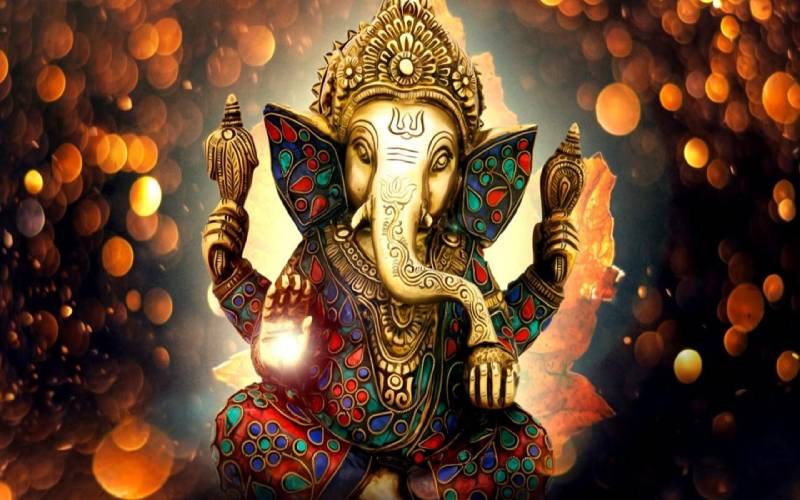
Chaturthi Thithi usually comes twice a month. One is normal Chaturthi and the other is Sankatahara Chaturthi. The Sankatahara Chaturthi which falls on the fourth day of the Krishna Paksha (The dark lunar phase or the waning fortnight of the moon) is celebrated. It is also known as Sankashti Chaturthi. If this falls on a Tuesday, it is called Angaraki Sankashti Chaturthi (Angaaraka Sankatahara Chaturthi). This day is considered most important among the other Sankatahara Chaturthi days, and it has been observed from around 700 B. C. (As per some records). Angaarak in Sanskrit means red-like burning coal embers and it refers to the planet Mars (Mangalvaar or Tuesday is named after Mars).
Devotees get their wishes fulfilled by observing Sankatahara Chaturthi Vrat. Observing a fast on this day reduces problems, for Ganesha is the remover of obstacles and the Lord of intelligence. Just before moonlight, people recite the ‘Ganapathi Atharvasheersha’ in order to invoke the blessings of the Lord. Besides all this, he is worshipped with a unique name and Peeta (Seat) on every month.
Each Vrata (Strict fast) has a goal, and this can be understood through a story. This prayer or observance has a total of 13 Vrat Kathas (1 for each month and the 13th story is meant for the Adhikamaasa – the Hindu lunar calendar has one extra month every four years). The uniqueness of the Vrata is that the story pertaining to that particular month has to be recited. Now, let us look at the 13 Ganesha-s (Who has to be worshipped as per the Hindu calendar) and the 13 Peeta-s.
| S. No. | Month | Name of the Ganesha
(To whom the pooja is performed) | Name of the Peeta |
| 1 | Chaitra | Vikata Maha Ganapathi | Vinayaka Peeta |
| 2 | Vaishaaka | Chanakraraaja Ekadanta Ganapathi | Srichakra Peeta |
| 3 | Jyeshta | Krishna Pingala Maha Ganapathi | Sri Shakthi Ganapathi Peeta |
| 4 | Aashada | Gajaanana Ganapathi | Vishnu Peeta |
| 5 | Shraavana | Heyrambha Maha Ganapathi | Ganapathi Peeta |
| 6 | Bhadrapaada | Vignaraaja Maha Ganapathi | Vighneshwara Peeta |
| 7 | Ashvayuja | Vakrathunda Maha Ganapathi | Bhuvaneshwari Peeta |
| 8 | Karthika | Ganaadipa Maha Ganapathi | Shiva Peeta |
| 9 | Margashira | Akuratha Maha Ganapathi | Durga Peeta |
| 10 | Pushya | Lambodhara Maha Ganapathi | Soura Peeta |
| 11 | Magha | Dwijapriya Maha Ganapathi | Saamanya Deva Peeta |
| 12 | Phalguna | Balachandra Maha Ganapathi | Aagama Peeta |
| 13 | Adhika | Vibhuvana Palaka Maha Ganapathi | Doorva Bilwa Patra Peeta |
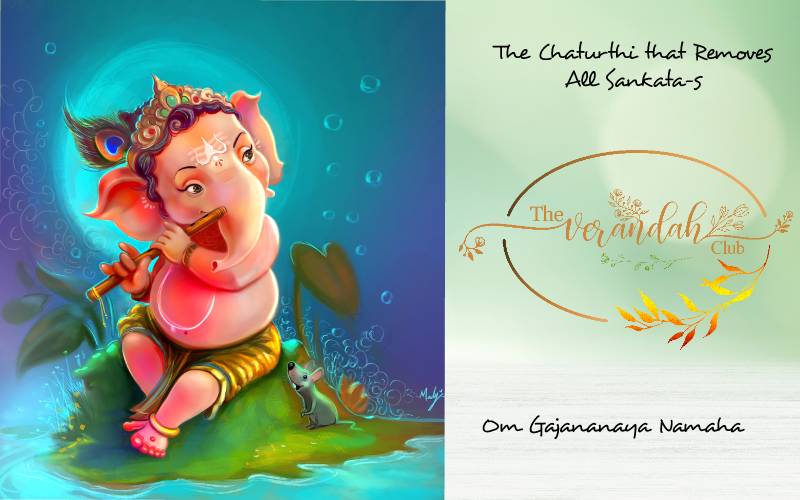
It is believed that Ganesha bestows his presence to all his devotees on each Sankatahara Chaturthi. Lord Shiva had declared Him to be the obstacle remover on Chaturthi. Ganesha is worshipped as the God of wisdom, prosperity, and good fortune. He is traditionally invoked at the beginning of any new venture or at the start of a trip. Every region has its own small variations, but Lord Ganesha has always been celebrated as the remover of obstacles throughout the length and breadth of the country.
The observance of Sankatahara Chaturthi is supposed to help us to understand the obstacles faced by oneself. Individual Karma and issues connected with one’s own attitude are part of the list of obstacles. People observing the Vrata should focus on the obstacles within and outside. This will help them to move ahead. Prayers to Lord Ganesha on this day will help one to focus on the path ahead and succeeding it.
This auspicious day is celebrated in India with great reverence. Several Poojas to Lord Ganesha keep happening all throughout the day. Prayers during the Abhisheka-s that happen in the early morning and evening are sure to bestow us with good merits. Let us visualize to have a sight of the various Abhisheka-s that will be offered to Vinayaka on the Sankatahara Chaturthi day.
Before the ritual of Abhisheka begins, it shall be noted that a Kalasa (Pot) containing pure water, decorated with the mango leaves, and a garland is kept in front of the deity. The water contained in the Kalasa is finally offered to the Lord towards the end of the ritual. The Theertha showered on the lord and the portion of Theertha left in the Kalasa is later sprinkled on the participants of the Pooja as Prokshanam.
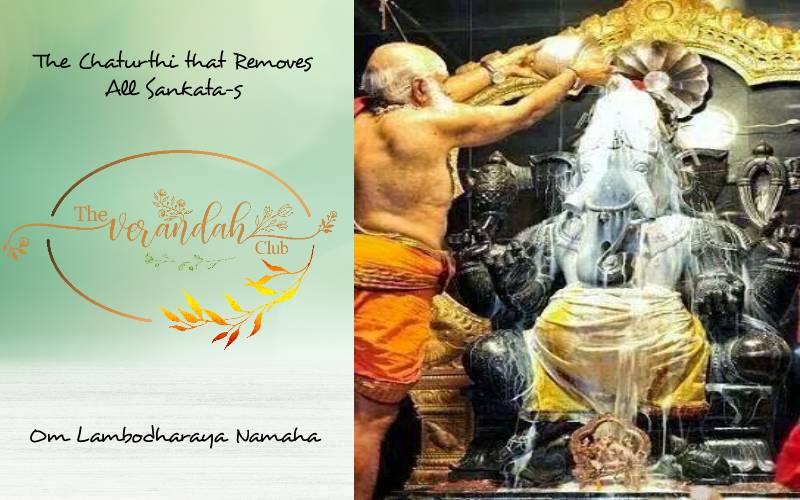
The Abhisheka for idol of Lord Ganapathi is first done with water. The Vigraha is then cleaned with a piece of white cloth, followed by applying oil. The rice flour mixed with water is kept ready in a pot for performing the next Abhisheka. Then, powdered turmeric water Abhisheka which is proceeded by Panchaamritha Abhisheka. The Panchaamritha prepared by mixing cut-pieces of banana, jaggery, ghee, and honey, is kept ready even before the rituals begin. The Abhisheka is then done with Paal (Milk), followed by Thayir (Curd), and Elaneer (Tender coconut). These are followed by the Abhisheka of cut pieces of oranges. The Lord is then bathed with fresh lemons by squeezing them on the idol instantly.
It could be noted that after each Abhisheka is performed, Aarati must be done with a lamp accompanied by ringing the bell.
Water is poured on the Vigraha to make Him clean and then wiped with the same piece of white cloth. The Chandan (Sandalwood paste) is mixed with water and offered on Him. It is followed by Vibhuti (Sacred ashes). Vibhuti is either offered dry or in watery consistency. The Abhisheka is followed by Panneer (Rose water) and Theertha in the Kalasa. To conclude the ritual, the Lord is finally wiped, and a smooth layer of oil is applied. A new Dhothi (Loin cloth) is tied around the Vigraha and a Rudraksha rosary is offered. The deity is then artistically decorated with Chandan, Kunkuma (Red turmeric powder) and flower garlands.
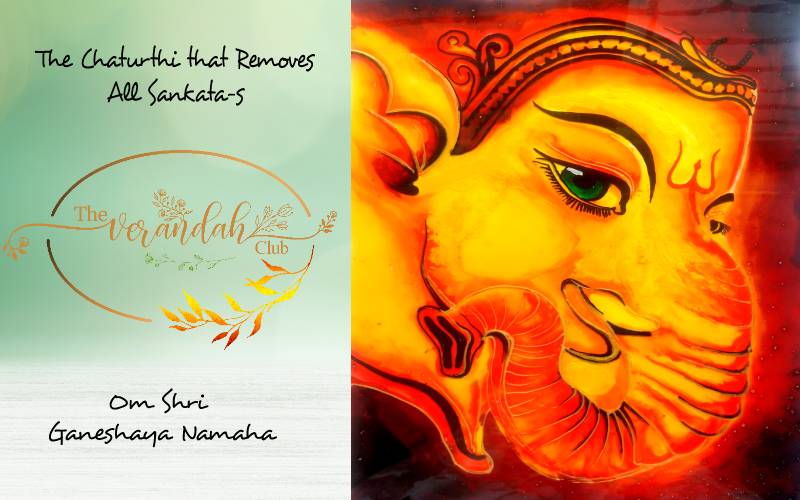
The Dhupa (Sambrani), Deepa (Lamp), Naivedyam (Food offered to God) and Aarati can be seen to be offered to the Lord along with the portions of the ‘Atharvasheersha Upanishad’ being chanted. The Aarati is then offered to the participants of the Pooja. A plate holding bananas, coconut, betel leaves and the nuts are also offered to the God. The Naivedyam is usually a Paal Paayasam (Milk pudding made with rice), or Sakkara Pongal (Rice boiled with jaggery).
The whole ritual is generally witnessed to be accompanied by various Vedic chants. One can also witness the ‘Vinayaka Ashtotram’ being chanted towards the end. On this ceremonious day, one could also get the vision of several Archana-s being performed with the leaves of Bilwa, and the lord to have been decorated with Erukkan Malai (Garland made of Crown flowers). Many devotees can be noticed performing Thopukaranam after all the rituals.
Let’s celebrate this day at home by offering Modaka-s and chanting different Sloka-s to the Lord. One can be sure to get His blessings through which every Sankata will be shattered into pieces.
Believers are never let down by Ganesha Maharaaja!
NEXT ARTICLE

Subramania Bharati, often referred to as Mahakavi Bharati (Great Poet Bharati), was a revolutionary poet, journalist, and social reformer whose words...
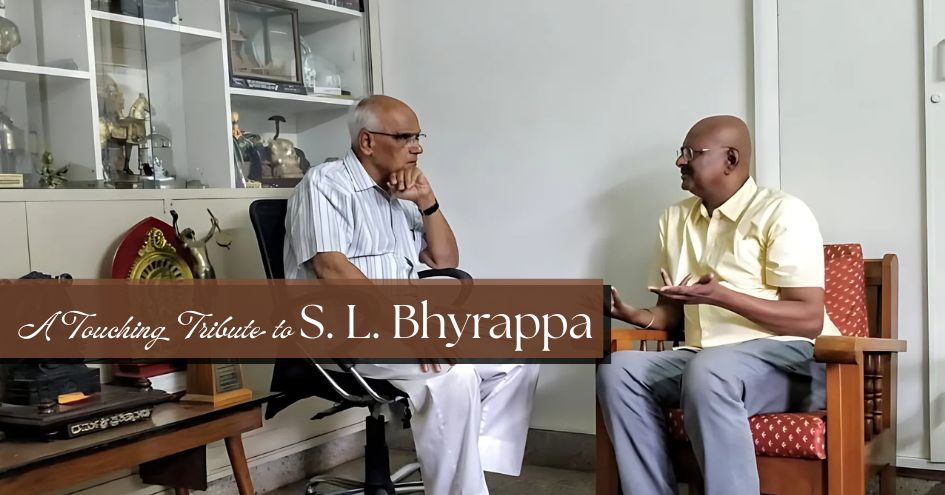
Some writers tell stories, and then there are those rare souls who hold up a mirror to our civilisation, our history, and our innermost selves. Sri Sa...
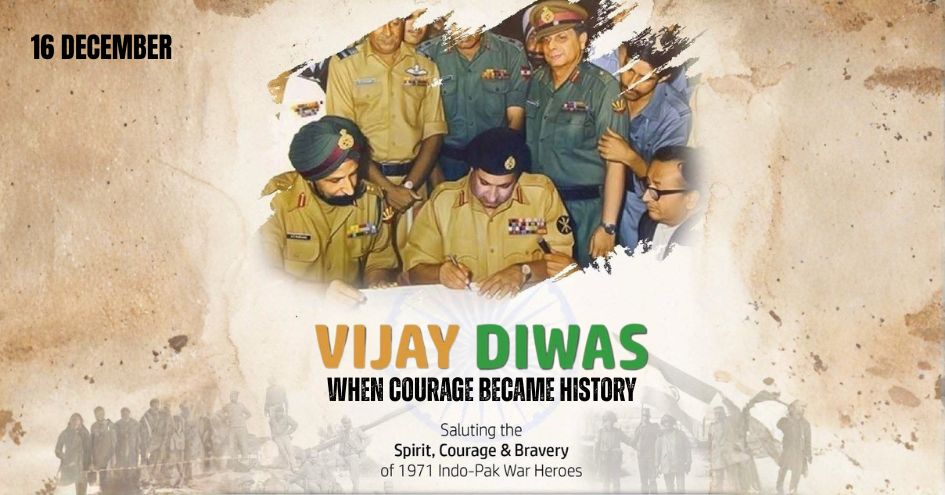
As the Tricolour rises high on 16 December, Vijay Diwas calls out to the conscience of the nation.It reminds us of a timeless truth:Freedom is earned,...